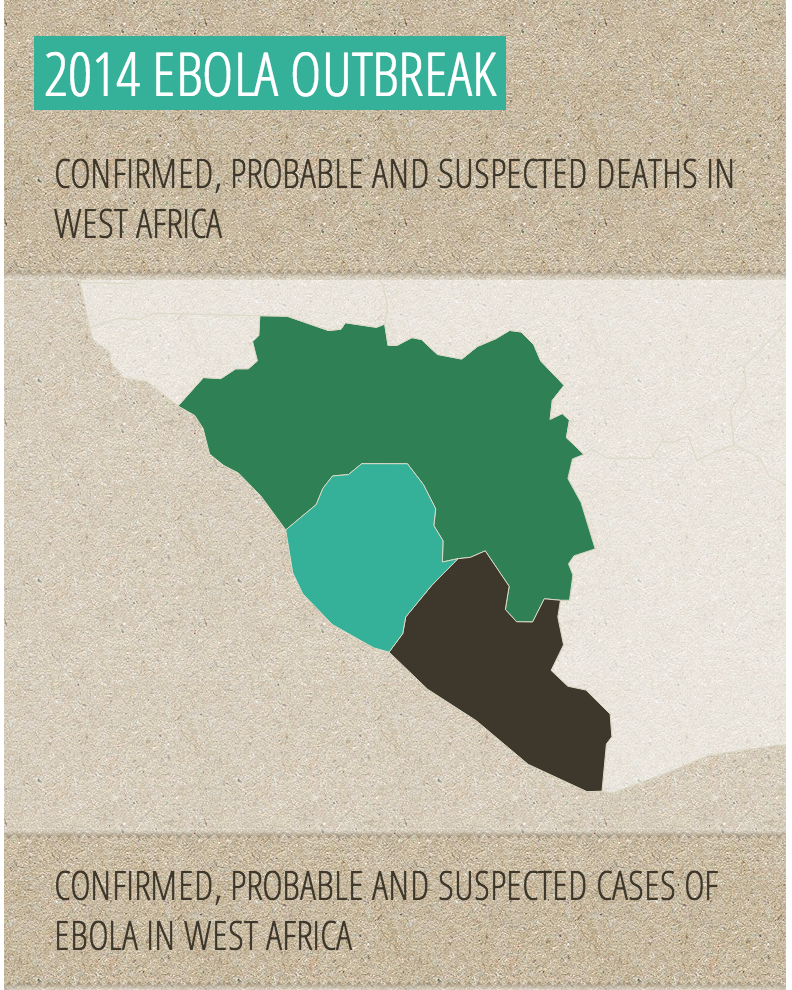The worst Ebola outbreak to date began in December 2013, in the remote village of Guéckédou, Guinea. By March 31, 2014, the disease had already killed 78 people in Guinea and was now spreading to the neighbouring Liberia and Sierra Leone. Michelle Van Herp, an MSF epidemiologist in Guéckédou, said that the virus had been identified as the Zaire strain — the deadliest one.[1]
In August 2014, WHO announced that an “unprecedented” number of health care workers were falling ill and dying.[2] They blamed this in part to a shortage of medical staff in affected regions. Due to the magnitude of the epidemic, Médecins Sans Frontières/Doctors Without Borders (MSF) had been rallying for support since March.[3]
Ebola reached Mali, Senegal, Nigeria, Spain and the United States, but by the summer the situation remained most critical in Guinea, Liberia and Sierra Leone. On August 8, WHO declared and international public health emergency.[4] West African governments began imposing strict measures in an attempt to curb the spread of the disease.
According to the WHO, by August 6, the total number of confirmed, probable and suspected cases of Ebola in Sierra Leone reached 717, and the total including nearby Guinea, Liberia and Nigeria was 1,779.[5]
(Click the infographic for outbreak statistics, which are correct as of Jan. 26, when this case study was published.)
—
[1] “Guinea: Mobilisation against an unprecedented Ebola epidemic,” Medecins Sans Frontieres, March 31, 2014.
[2] “Unprecedented number of medical staff infected with Ebola,” World Health Organization, August 25, 2014.
[3] Buck, Genna, “Why is the overwhelmed MSF in charge of the Ebola fight?” Maclean’s, October 16, 2014.
[4] “Ebola Outbreak in West Africa declared Public Health Emergency by WHO,” Public Health Agency of Canada, August 8, 2014.
[5] “Ebola virus disease update – West Africa,” World Health Organization, August 8, 2014.
[6] “Ebola response roadmap – Situation report,” World Health Organization, December 10, 2014.
